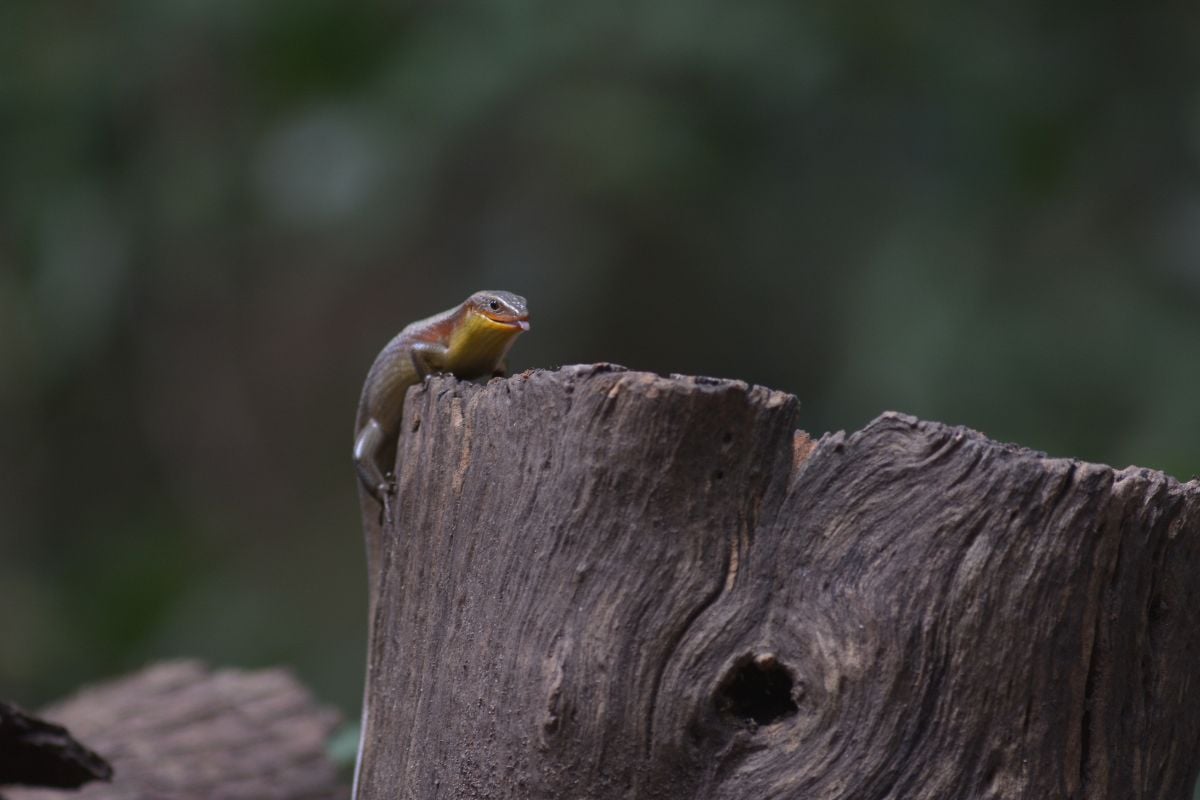Are sub-freezing temperatures on their way? Composting with worms does not have to stop during those cold winter months! If you live in a cold climate, your composting worms can continue working when winter approaches. You need to make some decisions. Here are your choices:
- Do nothing.
- Insulate.
- Move the worms to a sheltered location.
- Move the worms to a heated location (such as in the house, heated outbuilding, or basement).
Wild worms fend for themselves during freezing temperatures. They dig deep to stay warm. Composting worms are somewhat domesticated because they live in a habitat that you provide. Therefore, you must take action to keep the worms alive over the winter. Or, you can do nothing, and your composting program will likely be OK.
Do Nothing to Your Composting Worms
What happens if you just leave the wiggler worms in the outside worm bin? Worm activity slows down as the temperature drops. Below 40 degrees Fahrenheit, the worms will be at risk of succumbing to the cold. They will burrow toward the warmest part of the bin: the bottom and center.
Any food scraps that you add will increase the temperature slightly. The process of decomposition generates some heat. However, this may not be enough to keep the worms alive.
When the conditions are right, adult composting worms lay eggs. Worms are simultaneous hermaphrodites. This means each worm has female and male reproductive organs. Contented composting worms exchange DNA and produce cocoons.
These cocoons survive freezing temperatures. With a little luck, baby worms will hatch in the spring. Therefore, leaving the worm bin outside in the winter probably won’t be the end of your composting program.
If the worm population does not start to rebound in warm weather, you can order more composting worms from Uncle Jim’s Worm Farm.

Insulate Your Worm Bin
To keep the worms warmer in cold weather, add insulation to the outside of the worm bin. Bales of straw, blankets, used carpet, Styrofoam, a heat mat, or even bubble wrap will suffice. Leave gaps so that fresh air can flow into the bin’s air holes. Be sure not to block the drainage holes.
We cannot guarantee that insulating alone will be enough to save your worms in a colder climate. Insulation can be combined with moving the bin to a sheltered location for extra protection.
Move the Worms to a Sheltered Location
A garage, shed, or outbuilding helps protect the worms from the elements in winter months. Less exposure to cold winds keeps the bin a bit warmer. Add insulation. Try a heat source like a seed tray warming mat or an incandescent light. Even a 7-watt night light can add enough heat to keep the bin from freezing. If you use a light, add a worm bin blanket or newspaper to keep the worms in the dark.
Safety warning: Be careful to prevent a fire or electrocution. Keep heat sources and electrical cords away from moisture and combustibles.
Worm bins can weigh several hundred pounds depending on size and fullness. Harvest some fertilizer to lighten the load. You do not have to move all the worms or the entire bin. You could set up a smaller worm bin in the sheltered location.
Move the Worms to a Heated Location
When you decide to give your composting worms a cozy, heated retreat during the cold winters, you’re not just being kind; you’re setting them up for success. Here’s how to create a worm paradise indoors:
- Find the Perfect Indoor Nook: Think of this as a winter vacation for your worms. Choose a spot in your home that remains relatively warm and constant in temperature. Closets, under the kitchen sink, cabinets, or a quiet corner are all excellent choices. Basements and heated outbuildings work well, too.
- Set Up an Indoor Worm Bin: To make your worms feel at home, prepare a smaller bin that fits comfortably in your chosen indoor space. You can find small-footprint composting bins on our website. It’s like setting up a cozy winter cabin for them. Transfer a portion of your worm population along with some bedding material from the outdoor bin to ensure a smooth transition.
- Enjoy Optimal Conditions: With a stable indoor environment and optimal air temperature, your worms can keep munching on organic waste without interruption. It’s like a warm, all-inclusive resort for your composting crew.
- Easy and Productive: The best part of this setup is the convenience it brings. No need to bundle up and brave the cold to feed your worms. You can tend to their needs from the comfort of your home. Plus, the consistent conditions mean your worms can work around the clock, creating nutrient-rich compost.
- Safety First: While you’re the host with the most, remember to keep things safe. Make sure heat sources are a safe distance from moisture and anything flammable to prevent any unexpected mishaps. Maintaining electrical cords and heat sources is also essential.
Got questions about composting with worms? Check out our blog, buy live worms, and see our indoor composters. We ship worms year-round. They are guaranteed to arrive alive, or we will send new ones. Send your questions to us on social media or through our website.









